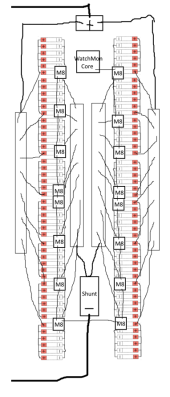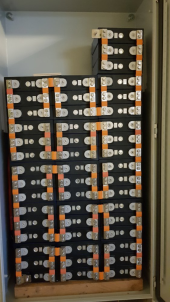drummerboy1864
New Member
- Joined
- Jan 18, 2022
- Messages
- 10
I know im a new user and might have some amature questions so I apologize. But I love the support on this forum from reading through past posts.
However reading through posts, I am unable to come up with a configuration for a 16s6p system on a single BMS. Im working with batrium and they have assured me I only need 16 monitors with a single watchmoncore bms if I parallel first, then series and put everything in 1 string.
However with these prismatic cells im not coming up with a good battery layout for how to make this work. and I realize this kind of setup has its drawbacks as well. Im using 230AH 3.2v prismatic CALB cells. I have 96 of them, and would love for it to be one big 70Kwh battery bank for my solar system.
Is this really possible to set these cells up in a 16s6p configuration on only 16 cell monitors and 1 BMS? or do I need to set up 6 strings with 6 BMSs. Or do I pick a happy medium of 3 battery banks of 16s2p? They are all grade A cells, so balancing I realize is difficult with this many, but will be easier with grade A cells.
Any advice is greatly apprechiated!
However reading through posts, I am unable to come up with a configuration for a 16s6p system on a single BMS. Im working with batrium and they have assured me I only need 16 monitors with a single watchmoncore bms if I parallel first, then series and put everything in 1 string.
However with these prismatic cells im not coming up with a good battery layout for how to make this work. and I realize this kind of setup has its drawbacks as well. Im using 230AH 3.2v prismatic CALB cells. I have 96 of them, and would love for it to be one big 70Kwh battery bank for my solar system.
Is this really possible to set these cells up in a 16s6p configuration on only 16 cell monitors and 1 BMS? or do I need to set up 6 strings with 6 BMSs. Or do I pick a happy medium of 3 battery banks of 16s2p? They are all grade A cells, so balancing I realize is difficult with this many, but will be easier with grade A cells.
Any advice is greatly apprechiated!




